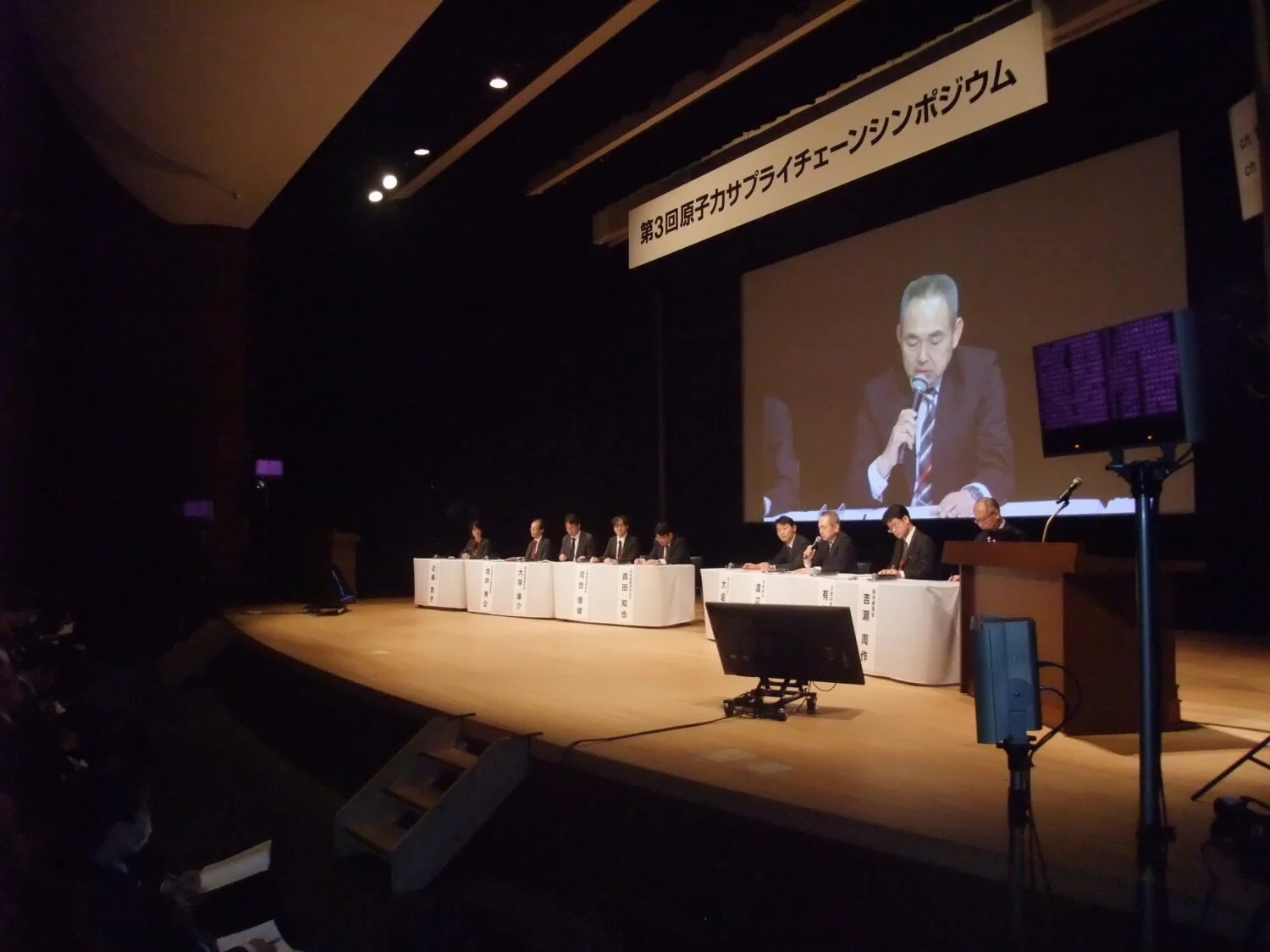He began by commenting on the 51st JAIF Annual Conference, which was held on April 9 and 10 at the Toshi Center Hotel in Tokyo. Mentioning that approximately 740 people had participated in the conference from Japan and elsewhere, he stressed that one session of the conference was devoted to the promotion of international activities by nuclear vendors.
He also described one of the speakers, the 23-year-old scientist Taylor Wilson, as “a man of action with great curiosity,” giving credit as well to those who must have been his mentors.
Takahashi next introduced JAIF’s just-published “World Nuclear Power Plants 2018.” The report was compiled based on responses to questionnaires sent to some sixty nuclear operators, nuclear organizations and nuclear related parties in thirty-one countries. According to the report, a total of 443 nuclear reactors (installed capacity of 409,375MWe) were in operation as of the start of this year, with 63 units under construction and 89 in the planning stage. Global installed (gross) capacity was at a record high for the third year in a row.
In the Q&A session that followed, the JAIF president talked about discussions at the roundtable studying the energy sponsored by Japan’s Ministry of Economy, Trade and Industry (METI). Given that Japan’s target for reducing CO2 emissions may not be met as the country still primarily uses fossil fuels, he said that he felt that the members shared a sense of urgency about carrying out an energy transition—a shift in power sources.
Under such circumstances, he said that it was understood that all choices of power sources would be considered and weighed against each other in competition. Looking ahead to both 2030 and 2050, he stressed the importance of continuing to include nuclear power in the energy mix, given that it has already been shown to reduce CO2 emissions.
Takahashi then shared his thoughts on discussions by the Japan Atomic Energy Commission (JAEC) concerning R&D on small module reactors (SMRs). Such reactors must be developed, he said, to match the needs of the private sector, adding that JAEC would like to consider an ideal strategy. On the other hand, improving established technology and pursuing new reactors are at different stages of development.
JAEC’s thinking, he said, was that the national government should take the initiative on prototype reactors, and that the private sector should take the initiative on practical applications. The structure has also changed, given the demise of such organizations as the Nuclear Power Engineering Corporation (NUPEC), which used to carry out demonstration testing and the like. JAEC, he concluded, aims to sort out the issues to be addressed.



-1.png)

















